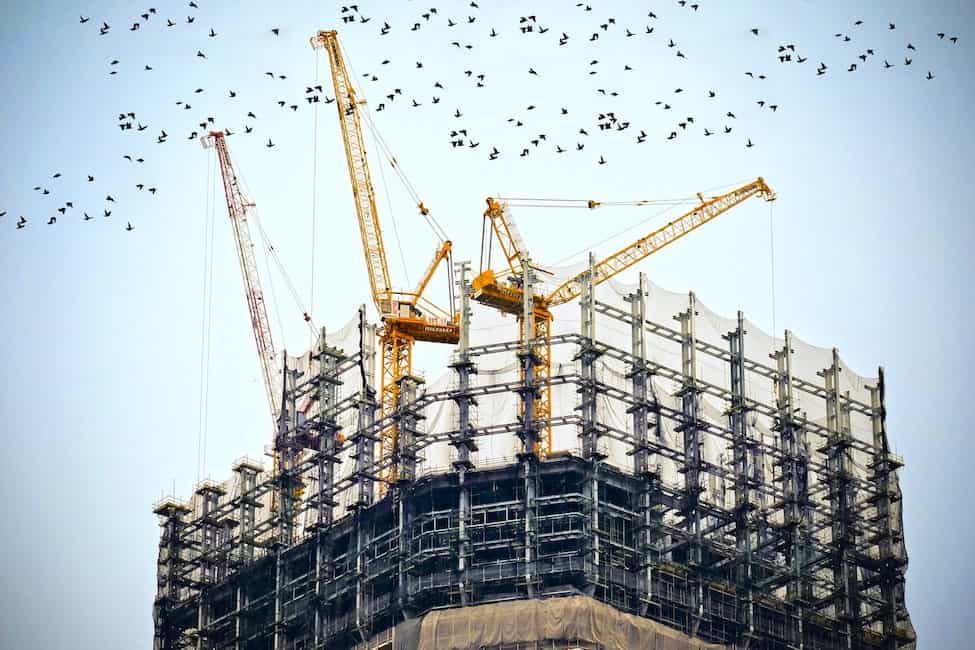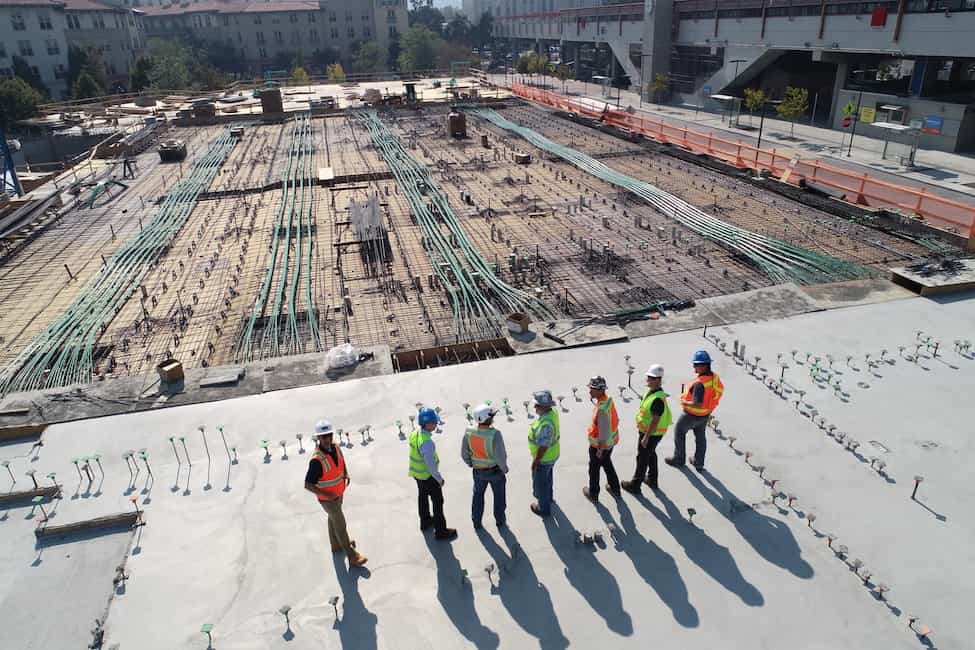Hemp is also commonly referred to as “industrial hemp.” It’s a cannabis plant that’s often used for the manufacture of fiber. People frequently associate hemp with the production of everything from paper and fiberboard to rope. This herb, interestingly enough, may also have a place in the steel building realm. There has been much discussion in recent times that relates to hemp and the state of the environment. People everywhere believe that it may be the answer to all kinds of concerns that involve fuel, plastic, and even steel. There are hemp options that may minimize many of the unpleasant consequences associated with industrialization in the modern age.

Steel, in a nutshell, is a robust and resilient metal that’s a staple in the production of electrical appliances, vehicles, buildings, tools, weapons, and infrastructure. So what makes this hemp option so worthy of mention? It’s an alternative that’s markedly more powerful than steel, according to many experts. It can handle bending and mending tasks of all varieties a lot better than steel can. The cooperation of this hemp option can do away with many of the consequences linked to the manufacture of steel. Think about the environmental impact of the production of steel.
In many cases, steel production releases wastes into the environment. The manufacture of this metal staple can harm the consumption of energy dramatically. People have many reservations about this form of manufacturing. They question all of its detrimental byproducts and their possibilities. They just as frequently wonder how malleable it is, too. It isn’t uncommon for people to wholly support the concept of decreasing the production of steel dramatically.
Early Uses of Hemp as Steel Alternative
A construction that involves steel isn’t as brand new as many people may suspect. It has quite a history. Henry Ford is a name that’s familiar to people all around the United States and world. That’s because he was the visionary behind the launch of the Ford Motor Company many decades ago. People who have any interest in car manufacturing may know a bit about Ford’s car production introduction. He constructed his car debut with the assistance of hemp steel. The hemp plastic vehicle was made to operate with the cooperation of hemp fuel, too. It was a kind of ethanol that was produced using hemp. Ford was at the helm of more than 12,000 acres set aside for the testing of hemp.
The vehicle that Ford put together so long ago didn’t consist entirely of hemp. Hemp was among the numerous plant components that he utilized for the project. Hemp, without a doubt, was the component that took its strength to the next level. That’s because it was the one that surpassed steel in the strength department.
Ford was keen on the concept of using plant matter any time it was realistic to do so. That’s also the reason he was so enthusiastic about hemp for fuel production purposes. Hemp can isolate carbon. Ford longed to introduce a vehicle that could be part of the “carbon-neutral” classification to the planet.
Hemp’s thrilling car didn’t remain a secret to the general public at all. That’s because it received significant mentions in well-known publications such as both the New York Times and Popular Mechanics magazine.
It didn’t take long for Ford to come across a stumbling block that involved his hemp car wishes. Hemp cultivation in America was prohibited in 1937 due to its relative that had THC or “tetrahydrocannabinol.” That made it unrealistic for Ford to manufacture significant numbers of vehicles that called for consistent amounts of hemp.
Ford wasn’t a fan of the idea of squandering forests that have been in the works for long periods. He wasn’t a fan of the concept of squandering mines, either. Ford believed that people could retrieve similar levels of mineral and forest components through hemp fields. He thought that they could recover them via the growth that was accessible yearly, too.
Why Use Hemp?

Building using steel is something that’s often thought to be rather costly. Industries naturally are always on the lookout for options that can help decrease expenses dramatically. Steel that’s made using hemp may be able to pave the way for reduced costs. Hemp can introduce people to diverse materials that may be more practical than standard options are. These materials may be a lot more economical when all is said and done, too.
It isn’t uncommon for people to think that hemp is a lot more powerful than steel. What confirms this? The plant can manage close to two times the steel’s weight before splitting and shattering to bits. A hemp fiber that’s particularly feeble may cut and break a lot less efficiently than feeble steel.
It isn’t uncommon for people to wonder about construction materials that are out there. Some people ponder construction materials that are particularly sustainable and, therefore, beneficial to the planet and the environment. Steel is in no way the most durable material choice out there. Concrete isn’t, either. Buildings made out of hemp have been in existence for longer than many people can even grasp. They’ve been around since the Roman era. The sixth century saw the debut of a mortar bridge that consisted of hemp. At that time, France was referred to as “Gaul.”
Nowadays, there is an abundance of botanists and builders who are doing anything they can to revitalize hemp in the construction sector. They’re blending lime and the woody components of hemp. The aim behind this is to bring on concrete that’s all-natural and lightweight. It’s to bring on concrete that offers rock-solid insulation perks. This concrete can even safeguard thermal mass. It helps people steer clear of mold development and pest infestations. It’s associated with a lack of pesticides, reduced humidity levels, and loud acoustics.
Using Hemp in Construction
Hemp resin can be suitable in the additive sector. It can function as an additive in the manufacturing of biodegradable polymers. These polymers strive to do away with waste concerns that are connected to toxic materials. People can blend plant fibers and biodegradable polymers, too. These blends can lead to the introduction of eco-composite materials that are biodegradable as well. Vegetable fibers can strengthen these polymers greatly. This can enhance mechanical components significantly. It can lead to new uses that are part of the construction field. It can lead to advancements that relate to subjects such as press consolidation, injection molding, and, last but certainly not least, film stacking.
The vast majority of contemporary materials out there create harmful gases. These gases quietly get inside of human bodies any time they’re engaged in standard things. Industrial hemp can develop products that aren’t toxic at all. That’s how hemp can minimize the emissions of all sorts of questionable chemicals. It can enhance general wellness for people all over the place, too. Hemp plants have cellulose that can be suitable for the bulk of products. Companies can make adjustments that involve retention lengths, chemistry, pressure, and heat whenever they tackle extrusion matters. This can lead to the emergence of cellular and fiber materials that possess numerous strength assets.
Industrial hemp plants have introduced various products that are appropriate for residential applications. Some examples are fiberboard beams, eco-composite panels, area rugs, window treatments, biodegradable paints, and even roof shingles.
Hemp and the Ecosystem
The vast ecosystem is no stranger to wear and tear. Economic expansions have done a lot in the ecosystem throughout the years. It can be tough for the planet to keep up with demands that involve materials that are not renewable. People contribute to the emissions of substantial energy amounts. These energy emissions can do a number on humans and their day-to-day lives. Although there’s no arguing that the ecosystem has ample strength, there’s also no disputing that it’s somewhat delicate.
There have been so many significant changes in weather throughout the past few years or so. There are parts of the planet that are especially vulnerable to fires, floods, and storms alike. Major disasters can showcase natural phases that are on the horizon for all. These things have significant impacts on the ecosystem and its operations.
It isn’t unusual for people to have concerns that involve the future. They wonder aloud whether kids will be able to swim in bodies of water such as ponds and rivers. They wonder whether they’ll be able to bask in the warm glow of the sun. These thoughts showcase the fact that interactions between people and natural elements no longer are all about equilibrium.
There are so many natural disasters that humans can do absolutely nothing about right now. Despite that, people can indeed affect the environment by refocusing their construction strategies significantly. Some advancements may be able to fix significant environmental harm. Innovative ecological agriculture may be able to do the trick. The same goes for bioengineering, which takes an intelligent approach. Humans may get a lot out of paying close attention to the things their ancestors suggested. They should make the most out of the latest technological options, too. Doing these things may be able to pave the way for sound engineering and planning choices. People are doing anything they can to introduce an environmentally-conscious society. They’re doing anything they can to add one that is in tune with the economic realm.
Taking care of stormwater is something that may seem rather tricky to many people these days. There are new and advanced stormwater handling practices that are on hand nowadays, however. These practices depend on development practices that do not make substantial impacts. They utilize vegetated filter strips and bio-retention, which can reduce the highest runoff rates. Other beneficial uses include restoring aquifers and enhancing the quality of water.
Industrial hemp cultivation can be eco-friendly by not using toxic fertilizer. This kind of fertilizer is harmful because of the watershed contamination it can bring. Industrial hemp cultivation can be beneficial for the filling of streams and watersheds alike. These materials can also be suitable for future design projects.
The Downsides of Steel Building

Steel structures can pose a problem for all sorts of reasons. People who are researching the hemp steel pathway may want to get to the bottom of the issues tied to steel buildings of all kinds. These buildings can be costly in the upkeep department. Taking care of steel maintenance matters can often cost substantial sums of money.
Steel isn’t exactly a material that can hold its own against fire. Construction professionals looking to use buildings for protection often go for concrete.
Molding steel isn’t exactly a simple task. People are not able to mold the material as they desire. There are many molding restrictions in place in the steel division.
Steel structures can be problematic for people who want to steer clear of buckling that’s noticeable. They can be problematic for people who want to stay far away from the downsides of significant expansion rates. Shifts in temperature can, in many situations, contribute to these rates.
Fireproofing, last but not least, can also be a concern in the steel construction division. Since steel isn’t a material that’s part of the fireproof category, it can bring on fireproofing substantial expenses. These expenses may be enough to encourage people to learn more about steel that involves hemp and all of the things that it can accomplish.
Article originally published on




